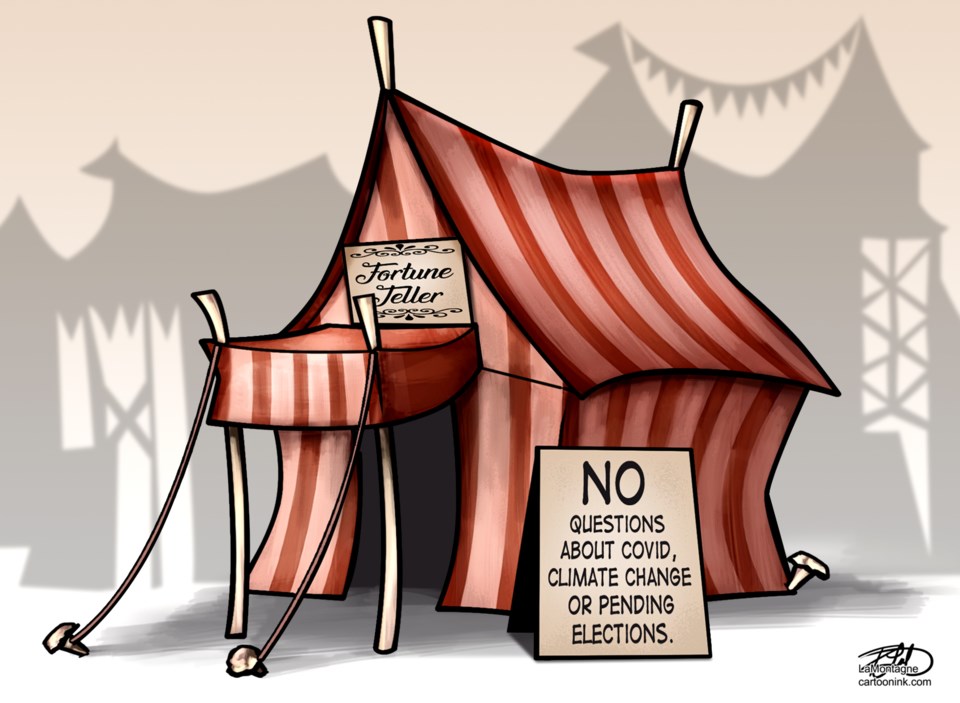History will likely not be kind to Alberta’s response to the COVID-19 pandemic.
The province has not been held up as a model of public health guidance as several times they have rushed to reopen and reduce COVID-19-related restrictions.
While people are eager to return to a pre-COVID-19 world with fewer limitations, public health decisions should be informed by science and guided with the purpose of maintaining the best situation for the health of Albertans.
The latest decision by the province to shift away from testing, ending contact tracing and the requirement for COVID-19 infected people to no longer quarantine is another mark against Alberta’s efforts to slow and stop the spread of COVID-19 transmission.
Alberta’s Chief Medical Officer of Health Dr. Deena Hinshaw announced a strategy at the end of July to shift away from testing, contact tracing and isolation of people who have tested positive or showing symptoms of COVID-19 by Aug. 16.
The decision was rightly criticized by medical experts, the Edmonton Zone Medical Staff Association, the Canadian Paediatric Society, the Alberta Medical Association, the Alberta College of Family Physicians and Federal Health Minister Patty Hajdu.
Paediatricians have been particularly vocal with youth under 12 not yet able to be vaccinated, schools returning to in-person lessons in the coming weeks and the increasing rate of infection among children.
The move, tied in with the low vaccination rates in the province, is concerning. It directly goes against the advice of Health Canada, the United States Centers for Disease Control and the World Health Organization and is the opposite path being taken by most Canadian jurisdictions.
Hinshaw followed the initial announcement by apologizing for causing “confusion, fear, or anger” in the communication of the province’s plan in eliminating most of the remaining public health measures for COVID-19.
She argued COVID-19 won’t be eliminated, meaning it’s time to take steps to live with the disease and shift greater attention to other health threats as she largely stood by the decision.
Hajdu penned an open letter to Alberta Health Minister Tyler Shandro, calling it an “unnecessary and risky gamble,” especially as public health modelling for Alberta has showed a resurgence of cases because of the Delta variant.
The growth in cases in Alberta is primarily among those who are unvaccinated, with only 66.4 per cent of Albertans 12 and up having both doses as of Aug. 9 – one of the lower rates in Canada.
She said the decision was made based on local, national and international scientific data, which was not released, to “justify these unprecedented actions.”
Premier Jason Kenney sniped back he would not “take a lecture” from Hajdu and it was only a political ploy, but the race to return to the pre-COVID-19 world is not who gets first to the finish line.
Other provinces have said they are planning for a post-COVID-19 world, but most have agreed it is too early to take these steps.
Chief Medical Officers of Health from Nova Scotia, Newfoundland and Labrador, Manitoba, Nunavut, Ontario and British Columbia have all said they are not ready to make similar moves as being done in Alberta.
They all noted they have plans for the reduction of further restrictions, however, it will only be done with the science dictates it is safe.
It is the role of health officials and governments to do their best in protecting Canadians. There is no greater priority than a healthy population since all other aspects – the economy, law and order, defence and infrastructure – are all reliant on healthy citizens.
Taking a more cautious approach is not a sign of weakness, nor is it a signal of letting businesses or individuals down or fear mongering.
There will come a time when we can fully embrace the post-COVID-19 world, especially as we’re closer to the finish line than the start.
Today, unfortunately, should not be the day.




